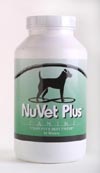|
accompanied by their matching
Hand Signals: Every puppy and dog owner has to learn a way to communicate with their canine friend. Many people have great success in their art of communication with their canines by tuning into the world of movement, vibration and light in addition to the common voice only methods of training and communicating to their puppy or dog. You must use some type of sign language system, either American Sign Language, signs you invent yourself, or the many signs that other dog fanciers have pioneered the way with. It may seem strange at first, but both you and your puppy will quickly adapt and the rewards are very great. All that's required is a willingness to learn.
(squat down and stretch your arms wide open and fully outstretched horizontally on each side. Look inviting, smile and happily say "Come") This signal is an exaggerated gesture and can be used to call your puppy back from long distances away, even when you are out of shouting or whistling range. Puppies and dogs understand this signal as being friendly and respond to it positively. (Show your palm open like the stop sign hand signal and close your hand right in front of your puppy's eyes just a bit above their head, as they are looking up at you. You can close your hand at the knuckles where your fingers begin or drop your hand into a downward position at the wrist.) Reach down, pet and handle your puppy, and give the puppy the verbal command to sit. Place one hand on his or her chest, and slide your other hand on their rump, and slightly push down on the rump with one hand while you hold the chest lifting upward slightly with the other hand, and say "sit". Sometimes a puppy's feet or legs will spread out a little weird, so you may have to pull the little tyke toward you a little bit so he or she can be sitting in perfect form. You will need to repeat this process several times. Once your puppy is in the sitting position, you can then show the "Stay" or "Wait" hand sign and give the verbal command "Stay". You will then release your puppy with a verbal "Okay" and a hand sign. All puppies should be taught to sit and stay in position until they are told to do something else. Your puppy should also be taught to sit at a distance. This hand signal can be given to your puppy through the window and they should sit for you. (Use your pointing finger or your first two fingers to point right at the end of your puppy's nose and then bring your two pointing fingers up to your eyes until your puppy makes eye contact with your eyes.) Only when your puppy looks straight back at you do you praise he or she for eye contact. Utilize the verbal command: "watch me" to get your puppy's attention focused on you in order to give further commands or to distract your puppy from something he or she should not be involved in. "Watch Me" is a very useful command and can be used to break their attention if they are focused on an activity or sound they find stimulating. The "Watch Me" command can actually prevent your puppy from wandering off and blundering into or creating a dangerous situation someday. (Once your puppy is looking at you, extend your arm out with the palm of your hand down, forming a parallel position with the ground. Point your hand at your puppy's face and then lower it all the way to the ground. This hand command is also a somewhat exaggerated signal and can be understood and effective at quite a distance away from your puppy.) Once this down command is part of your puppy's vocabulary it can be utilized in a variety of situations. (The full palm of your hand is extended from shoulder height at arms length towards your puppy. Some trainers call this the policeman's stop signal. In other words: show your puppy the palm of your hand.) This command and hand signal can help you to gain control over your puppy at any time. Once your puppy has this hand signal and verbal command in his or her repertoire, they can be taught to stay in any position they are put in. Your puppy should be taught to stay until they are told to do something else and even to stay at a distance. (Thumbs up. You can use one thumb or both thumbs up.) When you say the verbal command "Good Boy", or "Good Girl" at the same time you give your puppy the thumbs up hand sign, they will deduce that you are happy with their performance. (Make a circle with your thumb and forefinger, the standard okay sign.) This is generally used to tell your puppy that they are free to go play or they are released or done with their sit-stay. (Make a fist and put your thumb between first two fingers and rock your fist back and forth or move your hand in a circle as your arm is pointing to a spot on the ground where you want your puppy to go potty.) |
